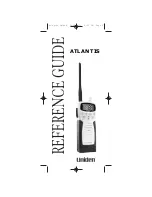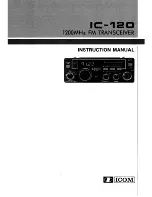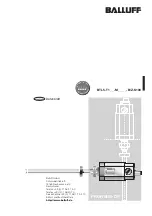
3-2 TRANSMITTER CIRCUITS
TX AF CIRCUITS (MAIN UNIT)
The audio signal from the microphone (MIC signal) is
applied to the MAIN UNIT, through the MICROPHONE
CONNECTOR (MIC BOARD; J1), and then applied to the
Voltage Controlled Amplifi er (VCA; IC3401).
The applied MIC signal is amplified by the MIC AMP, and
adjusted in level (=MIC gain) by the VCA circuit.
The level-adjusted MIC signal is passed through the MIC line
SW (IC3421), amplifi ed by the AF AMP (IC3452), and then
applied to the modulation circuits, through the LPF (IC3452)
and MIC line SWs (IC3422 and IC3451).
The MIC signal from the accessory socket [ACC1] on the
rear panel, is directly applied to the AF AMP (IC3452),
through the MIC line SW (IC3421).
The amplified MIC signal is applied to the modulation
circuits.
MODULATION CIRCUITS (MAIN UNIT)
The MIC signal from the TX AF circuits is passed through
the Balance-Unbalance converter (Balun; IC4401, IC4402),
and then applied to the CODEC (IC4461), to be converted
into digital audio signal.
The converted digital audio signal is applied to the MAIN
DSP (IC4001), and processed and modulated.
The modulation signal is converted into analog audio signal
by the CODEC (IC4651), and then applied to the 3rd TX IF
circuits, through the buffer (IC4661), as the 3rd TX IF signal.
LPF
IC3452
To the modulation
circuits
MIC
AMP
IC3401
LPF
IC3452
IC3422
VCA
AM P
IC3452
UMOD
AMOD
AMP
VCA
IC3421
IC3451
DTAF
From CONNECT
MC 1
MIC BOARD
BUFF
IC4401
LPF
IC4402
LPF
IC4402
To the 1st TX IF
circuits
From the TX AF
circuits
MAIN UNIT
CODEC
CODEC
IC4461
DSP_MOD IN
IC4001
DSP
IC4651
ATT
64 MHz TX 2nd LO
BPF
455 kHz
FI3641
491 kHz TX 3rd LO
AMP
IC3601
LO
AMP
IC3675
IC3621
D3671
ATT
IF
AMP
Q3651
IF
AMP
Q3631
AMP
IC4661
From the
modulation
circuits
MAIN UNIT
From the PLL UNIT
From the PLL UNIT
V/U TX IF
HF TX IF
BPF
64.455~71.25 MHz
BPF
10.85~10.95 MHz
To RF-B
To RF-A
3RD TX IF AND 2ND TX IF CIRCUITS (MAIN UNIT)
The 3rd TX IF signal from the modulation circuits is passed
through the LPF (IC3601), and then applied to the 3rd TX
mixer (IC3621) to be mixed with the 3rd TX LO signal from
the PLL UNIT, resulting in the 455 kHz 2nd TX IF signal.
The converted 2nd TX IF signal is amplifi ed by the IF AMP
(Q3631), and then passed though the 2nd TX fi lter (FI3641).
The fi ltered 2nd TX IF signal is amplifi ed by the 2nd TX IF
AMP (Q3651), and then applied to the 2nd TX mixer (D3671).
• HF BAND
The 2nd TX IF signal is mixed with the 64 MHz 2nd TX LO
signal from the PLL UNIT, resulting in the 64.455 MHz 1st
TX IF signal.
The 1st TX IF signal is applied to the 1st TX IF circuits on the
RF-A UNIT, through the BPF (L3692, L3693, C3692–C3697)
and band SW (D3701).
• VHF AND UHF BANDS
The 2nd TX IF signal is mixed with the 11.305 MHz (VHF
band) or 71.705 MHz (UHF band) 2nd TX LO signal from
the PLL UNIT, resulting in the 10.85 MHz (VHF band) or
71.25 MHz (UHF band) 1st TX IF signal.
The 1st TX IF signal is applied to the 1st TX IF circuits on
the RF-B UNIT, through the BPF (VHF band; L3681–L3683,
C3682, C3683, C3685–C3688 or UHF band; L3692, L3693,
C3692–C3697) and band SW (D3702).
3 - 5
• TX AF CIRCUITS
• MODULATION CIRCUITS
• 3RD TX IF AND 2ND TX IF CIRCUITS
















































